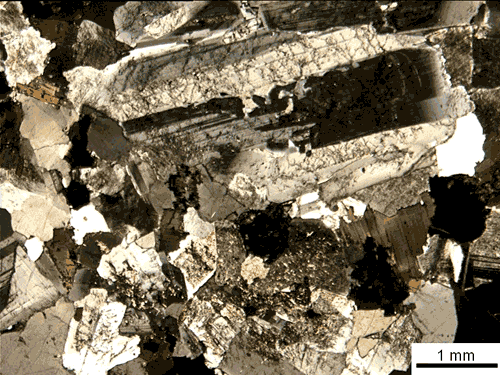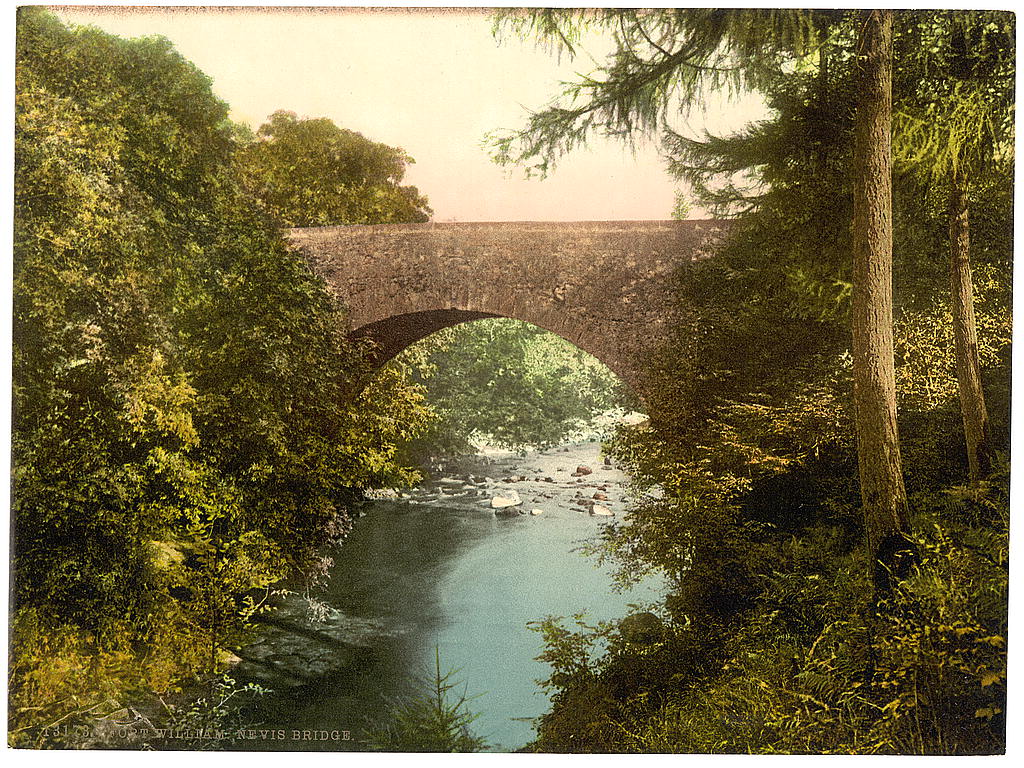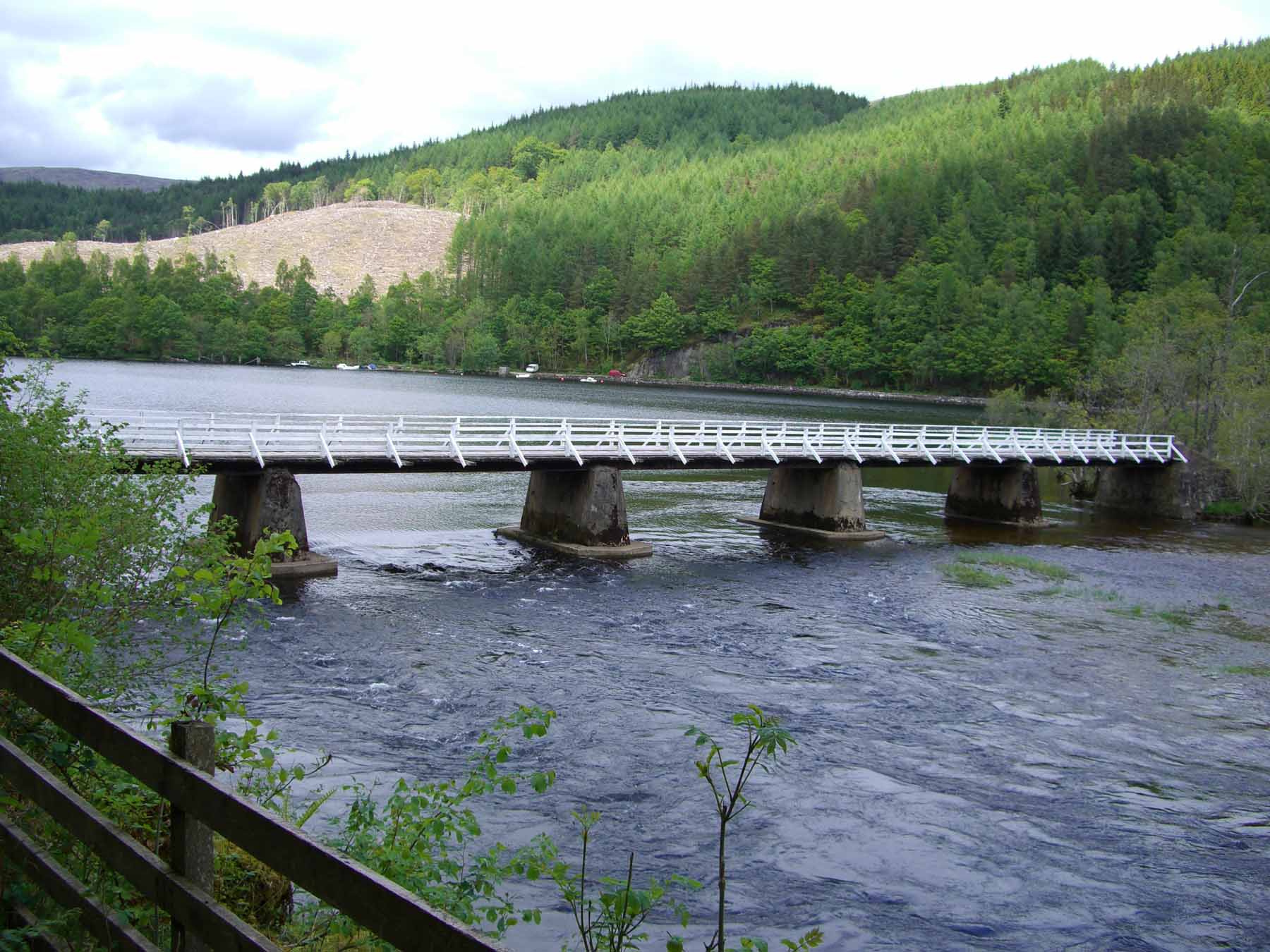|
Gaor Bheinn
Gaor Bheinn, also known in English as Gulvain ( gd, Gadhail Bheinn), is a mountain in the Northwest Highlands of Scotland. It is in Lochaber, south of Loch Arkaig and north of the road west of Fort William (from which it is usually climbed). It is composed of banded granite and shaped like a letter Y, with two tops connected by a ridge running from northeast to southwest, with the northern top 6 m higher than the one to the south. Crags drop at either end, and steep slopes fall away to either side. The south ridge path is really a stream bed, so in wet conditions an easier if longer ascent from Na Socachan is to walk up Allt a Choire Reidh towards Gualann nan Osna and climb the south top's north-west ridge. According to Ainmean-Àite na h-Alba, the name comes from ''Gadhail Bheinn'', meaning "mountain of the hunting dog A hunting dog is a canine that hunts with or for hunters. There are several different types of hunting dog developed for various tasks and purposes. Th ... [...More Info...] [...Related Items...] OR: [Wikipedia] [Google] [Baidu] |
List Of Mountains Of The British Isles By Relative Height
This is a list of P600 mountains in Britain and Ireland by height. A P600 is defined as a mountain with a topographic prominence above , regardless of elevation or any other merits (e.g. topographic isolation); this is a similar approach to that of the Marilyn, Simms, HuMP and TuMP British Isle mountain and hill classifications. By definition, P600s have a height above , the requirement to be called a "mountain" in the British Isles. The "P" terminology is an international classification, along with P1500 Ultras. P600 and "Majors" are used interchangeably. , there were 120 P600s in the British Isles: 81 in Scotland, 25 in Ireland, 8 in Wales, 4 in England, 1 in Northern Ireland, and 1 in the Isle of Man. The 120 P600s contained 54 of the 282 Scottish Munros, and 10 of the 34 Non-Scottish Munros (or Furths), all of which have prominences above , and are sometimes called the "Super-Majors". The list also contained the highest mountains in Scotland, Wales, Ireland, and E ... [...More Info...] [...Related Items...] OR: [Wikipedia] [Google] [Baidu] |
Northwest Highlands
The Northwest Highlands are located in the northern third of Scotland that is separated from the Grampian Mountains by the Great Glen (Glen More). The region comprises Wester Ross, Assynt, Sutherland and part of Caithness. The Caledonian Canal, which extends from Loch Linnhe in the south-west, via Loch Ness to the Moray Firth in the north-east splits this area from the rest of the country. The city of Inverness and the town of Fort William serve as gateways to the region from the south. Geology The geology of the Highlands is complex. Along the western coastal margin it is characterised by Lewisian gneiss, the oldest rock in Scotland. Liathach, Beinn Alligin, Suilven, Cùl Mòr, Cùl Beag, and Quinag are just some of the impressive rock islands of the significantly younger rich brown-coloured Torridonian sandstone which rests on the gneiss. Some of the peaks, such as Beinn Eighe and Canisp, are topped with later light grey or white Cambrian quartzite. Cambro-Ordovician limest ... [...More Info...] [...Related Items...] OR: [Wikipedia] [Google] [Baidu] |
Mountains And Hills Of The Northwest Highlands
A mountain is an elevated portion of the Earth's crust, generally with steep sides that show significant exposed bedrock. Although definitions vary, a mountain may differ from a plateau in having a limited summit area, and is usually higher than a hill, typically rising at least 300 metres (1,000 feet) above the surrounding land. A few mountains are isolated summits, but most occur in mountain ranges. Mountains are formed through tectonic forces, erosion, or volcanism, which act on time scales of up to tens of millions of years. Once mountain building ceases, mountains are slowly leveled through the action of weathering, through slumping and other forms of mass wasting, as well as through erosion by rivers and glaciers. High elevations on mountains produce colder climates than at sea level at similar latitude. These colder climates strongly affect the ecosystems of mountains: different elevations have different plants and animals. Because of the less hospitable ... [...More Info...] [...Related Items...] OR: [Wikipedia] [Google] [Baidu] |
Hunting Dog
A hunting dog is a canine that hunts with or for hunters. There are several different types of hunting dog developed for various tasks and purposes. The major categories of hunting dog include hounds, terriers, dachshunds, cur type dogs, and gun dogs. Further distinctions within these categories can be made, based upon the dog's skills and capabilities. They are usually larger and have a more sensitive smell than normal dogs. Breeds and capabilities used in hunting For a list of breeds of each type, see the detailed articles for each category: Gallery Medium loup.jpg, Wolf hunt depicted in a 12th-century bestiary Medieval women hunting.jpg, Medieval women hunting, illustration from a period manuscript Li Di-Hunting Dog.jpg, ''Hunting Dog'' by Li Di, 12th-century Chinese painting 37-svaghi, caccia,Taccuino Sanitatis, Casanatense 4182..jpg, Boar hunting, tacuinum sanitatis casanatensis (14th century) Hunt16thC.jpg, Hunting the hart (16th Century) from Turbervile, copie ... [...More Info...] [...Related Items...] OR: [Wikipedia] [Google] [Baidu] |
Granite
Granite () is a coarse-grained ( phaneritic) intrusive igneous rock composed mostly of quartz, alkali feldspar, and plagioclase. It forms from magma with a high content of silica and alkali metal oxides that slowly cools and solidifies underground. It is common in the continental crust of Earth, where it is found in igneous intrusions. These range in size from dikes only a few centimeters across to batholiths exposed over hundreds of square kilometers. Granite is typical of a larger family of ''granitic rocks'', or '' granitoids'', that are composed mostly of coarse-grained quartz and feldspars in varying proportions. These rocks are classified by the relative percentages of quartz, alkali feldspar, and plagioclase (the QAPF classification), with true granite representing granitic rocks rich in quartz and alkali feldspar. Most granitic rocks also contain mica or amphibole minerals, though a few (known as leucogranites) contain almost no dark minerals. Granite is ... [...More Info...] [...Related Items...] OR: [Wikipedia] [Google] [Baidu] |
Fort William, Scotland
Fort William ( gd, An Gearasdan ; "The Garrison") formerly ( gd, Baile Mairi) and ( gd, Gearasdan dubh Inbhir-Lochaidh) (Lit. "The Black Garrison of Inverlochy"), ( sco, The Fort), formerly ( sco, Maryburgh) is a town in Lochaber in the Scottish Highlands, located on the eastern shore of Loch Linnhe. At the 2011 census, Fort William had a population of 10,459, making it the second largest settlement in both the Highland council area, and the whole of the Scottish Highlands; only the city of Inverness has a larger population. Fort William is a major tourist centre on the Road to the Isles, with Glen Coe just to the south, to the east, and Glenfinnan to the west. It is a centre for hillwalking and climbing due to its proximity to Ben Nevis and many other Munro mountains. It is also known for its nearby downhill mountain bike track. It is the start/end of both the West Highland Way (Milngavie – Fort William) and the Great Glen Way (a walk/cycle way Fort William–Inverness). ... [...More Info...] [...Related Items...] OR: [Wikipedia] [Google] [Baidu] |
Loch Arkaig
Loch Arkaig (Scottish Gaelic: Loch Airceig) is a body of freshwater in Lochaber, Scotland, to the west of the Great Glen. It is approximately in length and lies above sea level, the maximum depth is around The main tributaries are the Dessarry and the Pean which flow through the glens of the same names, falling into the loch at the extreme west end, by the settlement of Strathan. The mountains of Lochaber lie to the north, and the Forest of Locheil to the south. The outflow is through the River Arkaig at the extreme southeast of the loch, which flows eastwards to Loch Lochy, passing Achnacarry. Two small islands lie at the eastern end of the loch, the larger of which, Island Columbkill, or Eilean Loch Airceig, is the site of a ruined chapel dedicated to St Columba which is the former burial ground of the Camerons of Locheil. A road from the Great Glen follows the north shore of the loch to Strathan where paths lead on to Knoydart, Glenfinnan and Loch Morar. In 1746, Jacob ... [...More Info...] [...Related Items...] OR: [Wikipedia] [Google] [Baidu] |
Lochaber
Lochaber ( ; gd, Loch Abar) is a name applied to a part of the Scottish Highlands. Historically, it was a provincial lordship consisting of the parishes of Kilmallie and Kilmonivaig, as they were before being reduced in extent by the creation of '' Quoad Sacra'' parishes in the 19th century. Lochaber once extended from the Northern shore of Loch Leven, a district called Nether Lochaber, to beyond Spean Bridge and Roybridge, which area is known as Brae Lochaber or ''Braigh Loch Abar'' in Gaelic. Lochaber is now also used to refer to a much wider area, one of the 16 ward management areas of the Highland Council of Scotland and one of eight former local government districts of the two-tier Highland region. The main town of Lochaber is Fort William. According to legend, a glaistig, a ghostly woman-goat hybrid, once lived in the area. Name William Watson outlined two schools of thought on this topic. He favoured the idea that ''Abar'' came from the Pictish and Welsh for "r ... [...More Info...] [...Related Items...] OR: [Wikipedia] [Google] [Baidu] |
Ainmean-Àite Na H-Alba
Ainmean-Àite na h-Alba (; "Gaelic Place-Names of Scotland") is the national advisory partnership for Gaelic place names in Scotland. Ainmean-Àite na h-Alba are based at Sabhal Mòr Ostaig on Skye. History Ainmean-Àite na h-Alba began as the Gaelic Names Liaison Committee, established in 2000 by the Ordnance Survey to improve consistency in Gaelic names on their mapping products. The committee expanded to become the Ainmean-Àite na h-Alba partnership in 2006. Functions Ainmean-Àite na h-Alba research and agree on place names, using local knowledge, historical sources and the principles of the Gaelic Orthographic Conventions. These names are used by local councils, roads authorities and the Ordnance Survey for signs and maps. AÀA are also producing a National Place-Names Database. This database was launched in August 2010, and contains over 3000 entries. Partnerships The partners are Argyll and Bute Council, Bòrd na Gàidhlig, Comhairle nan Eilean Siar, Highlands and I ... [...More Info...] [...Related Items...] OR: [Wikipedia] [Google] [Baidu] |
British Isles
The British Isles are a group of islands in the North Atlantic Ocean off the north-western coast of continental Europe, consisting of the islands of Great Britain, Ireland, the Isle of Man, the Inner and Outer Hebrides, the Northern Isles (Orkney and Shetland), and over six thousand smaller islands. They have a total area of and a combined population of almost 72 million, and include two sovereign states, the Republic of Ireland (which covers roughly five-sixths of Ireland), and the United Kingdom of Great Britain and Northern Ireland. The Channel Islands, off the north coast of France, are normally taken to be part of the British Isles, even though geographically they do not form part of the archipelago. Under the UK Interpretation Act 1978, the Channel Islands are clarified as forming part of the British Islands, not to be confused with the British Isles. The oldest rocks are 2.7 billion years old and are found in Ireland, Wales and the north-west of Scotland. Du ... [...More Info...] [...Related Items...] OR: [Wikipedia] [Google] [Baidu] |
Scotland
Scotland (, ) is a country that is part of the United Kingdom. Covering the northern third of the island of Great Britain, mainland Scotland has a border with England to the southeast and is otherwise surrounded by the Atlantic Ocean to the north and west, the North Sea to the northeast and east, and the Irish Sea to the south. It also contains more than 790 islands, principally in the archipelagos of the Hebrides and the Northern Isles. Most of the population, including the capital Edinburgh, is concentrated in the Central Belt—the plain between the Scottish Highlands and the Southern Uplands—in the Scottish Lowlands. Scotland is divided into 32 administrative subdivisions or local authorities, known as council areas. Glasgow City is the largest council area in terms of population, with Highland being the largest in terms of area. Limited self-governing power, covering matters such as education, social services and roads and transportation, is devolved from the ... [...More Info...] [...Related Items...] OR: [Wikipedia] [Google] [Baidu] |
Highland (council Area)
Highland ( gd, A' Ghàidhealtachd, ; sco, Hieland) is a council area in the Scottish Highlands and is the largest local government area in the United Kingdom. It was the 7th most populous council area in Scotland at the 2011 census. It shares borders with the council areas of Aberdeenshire, Argyll and Bute, Moray and Perth and Kinross. Their councils, and those of Angus and Stirling, also have areas of the Scottish Highlands within their administrative boundaries. The Highland area covers most of the mainland and inner-Hebridean parts of the historic counties of Inverness-shire and Ross and Cromarty, all of Caithness, Nairnshire and Sutherland and small parts of Argyll and Moray. Despite its name, the area does not cover the entire Scottish Highlands. Name Unlike the other council areas of Scotland, the name ''Highland'' is often not used as a proper noun. The council's website only sometimes refers to the area as being ''Highland'', and other times as being ''the ... [...More Info...] [...Related Items...] OR: [Wikipedia] [Google] [Baidu] |








